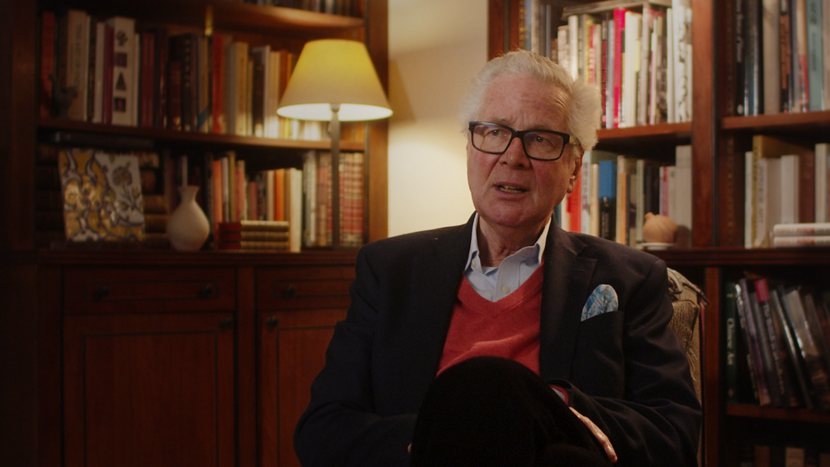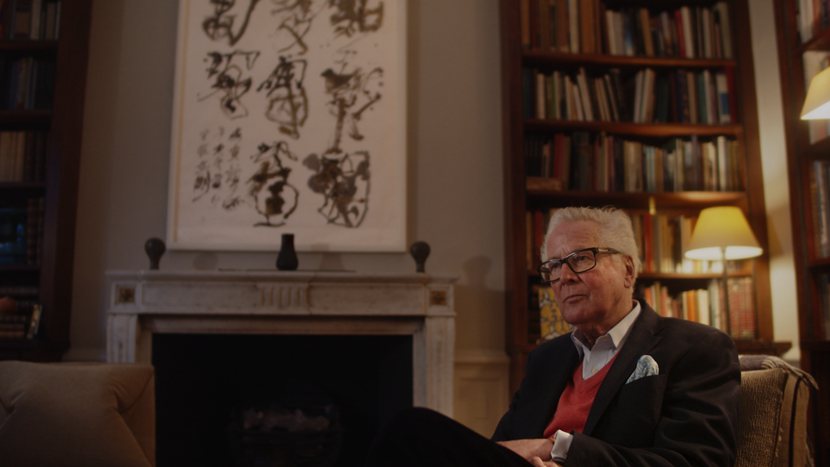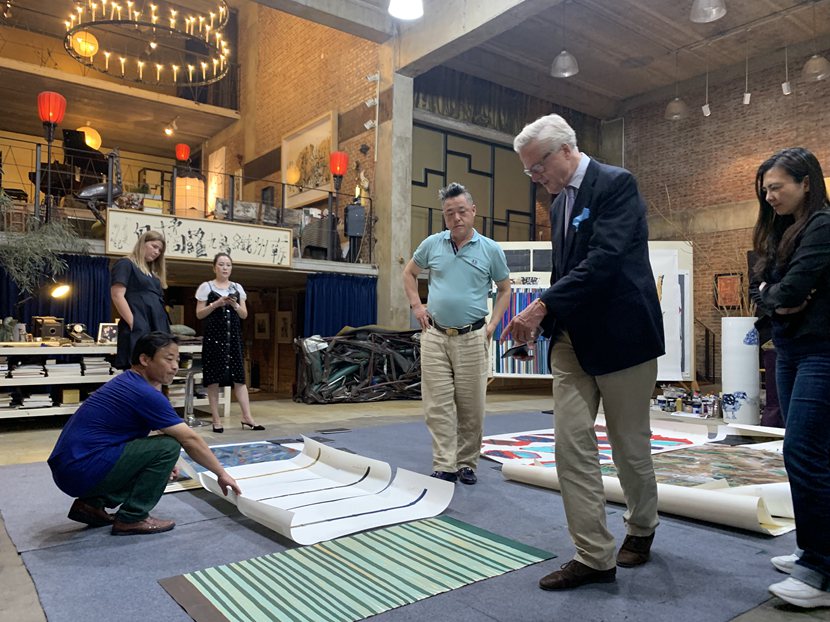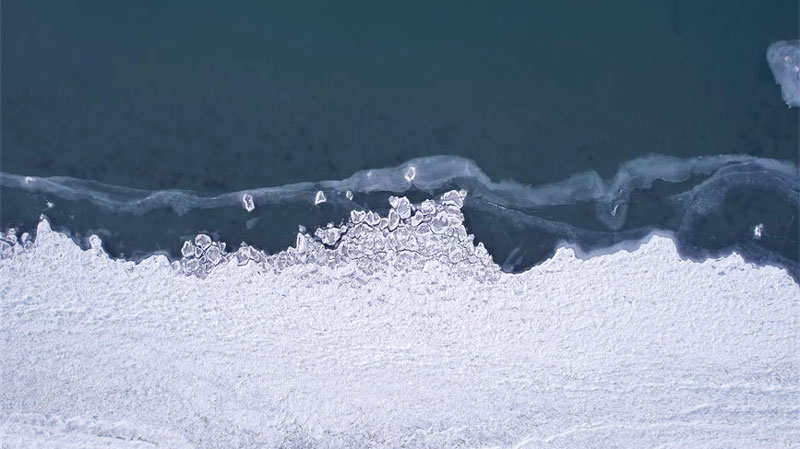Michael Goedhuis: Ink painting is the most idealistic and intellectually daring form of art
In the eyes of Michael Goedhuis, the London-based art dealer who hosted the first major exhibition of Chinese contemporary art in the Western world in 2001, contemporary artists in China bring to the world stage a fresh interpretation of a traditional set of artistic and scholastic values by connecting with a past that embodies the longest continuous culture in human history. They are creating something unprecedented from studying the old masters and classics.

Michael Goedhuis
Specialising in Chinese contemporary ink paintings and Ming Dynasty bronzes, Michael Goedhuis first entered the art market in the 1970s working for Colnaghi, the world’s oldest commercial art dealership. Since then, Goedhuis made his name in many fields of art from Persian to Japanese, but eventually settled on Contemporary China, producing numerous publications that were the first of their kinds and setting in motion a decade-long trend of buying contemporary Chinese art.
Next year, Goedhuis and his colleagues will be hosting an exhibition of contemporary ink paintings and Ming bronzes at Bonhams London. In an exclusive interview with People's Daily Online, he shares his enduring passion for the art and antiquity of China.
A long journey to China
People’s Daily Online: You’ve made your name in the art world through numerous successful deals in Islamic art. What made you shift your focus to East Asia, and eventually concentrate on modern and contemporary Chinese art?
Michael Goedhuis: Indeed, I came to art dealing a bit late because my starting point in life was in investment banking in London, Paris, and New York. And then I ultimately, after business school, went back to school to do a postgraduate degree at the Courtauld, and that was actually European art history, not Asian. Shortly afterwards, I joined Jacob Rothschild - Lord Rothschild – who had bought Colnaghi, which was the great old master painting establishment in England.
At Colnaghi, I was given the opportunity to sell the collection of Baron Edmond de Rothschild, who had inherited a great collection of Persian and Mughal art. Eventually some of that great collection went to the Shahbanou of Iran, the Metropolitan Museum, and all over the world. After the Iranian Revolution, a lot of the buying of Persian materials dried up, so I looked for alternative areas which I could work in. And then gradually my interest gravitated towards China, and it has really become my passion ever since. Eventually, I became independent of Jacob, started my own company, and went on dealing in mostly Chinese material.
People’s Daily Online: In your early days travelling between China and the UK, what was your impression of the country and its artists?
Michael Goedhuis: I was going back and forth to China – Hong Kong and increasingly mainland – over the 1980s just to get to know the country. And I wasn’t really meeting artists then. My interest was much more in China in general, and I wasn’t really thinking so much of Chinese contemporary art, although it was already happening.
When I was meeting artists in the late 1980s and early 1990s, it was such a pleasure because the artists were quite modest in the way they lived. For me it was very, very exciting to meet these people who were living in these little apartments and hutongs in these little villages outside Beijing which were full of artists. It was wonderful atmosphere.

Michael Goedhuis
A revolutionary pictorial language
People’s Daily Online: Looking at the artists that you represent and artworks that you collect, ink paintings play a big part. What is so special about this medium that so draws you?
Michael Goedhuis: Well, I feel to quote the leading authority, a leading American authority on the field, Britta Ericksen. She calls ink painting the most idealistic and intellectually the most idealistic and intellectually daring of any work, being done in China. And it's very interesting that in China, out of 1.4 billion people, there's only a handful of artists working in ink on paper who have attracted an international audience.
These ink painters are fascinating for me, and I think are delivering a terrific message, which is that via the knowledge and study of the old masters in China – the painters of the Song, Ming and Qing Dynasties – they have been able to create a new pictorial language. It's very similar to what was happening in the 20th century in Europe, where you had Cezanne, Picasso, Braque, and Kandinsky creating their revolutionary language. But how? By absorbing the lessons from people like Velasquez, Rafael, Michelangelo and Leonardo and Poussin, by looking back and absorbing and studying the old like Delacroix. It was through this almost scholastic knowledge and that intellectual as well as visual understanding that they were able to create a new language.
There are people like Liu Dan who is probably the greatest of all the Chinese ink painters of a traditional leaning, whose works, at first glance, look very like traditional ink paintings – grey and black ink painting on white and are of flowers, trees, or rocks. But these works are very revolutionary because they are different in very subtle ways. And then there is an artist like Qiu Deshu who started the first avant-garde group in China called Grass Grass. We have a big self-portrait of his in the gallery. It’s ink and mixed media and it’s radically different to anything that has been seen before.
People’s Daily Online: Your passion for Chinese bronzes – especially those from the Ming Dynasty – is very distinct from your interest in modern and contemporary ink paintings. Is there a connection between them?
Michael Goedhuis: I think that my motivation for dealing in both Chinese antiquities and in Chinese modern and contemporary art is that the antiquities feed my interest in ancient culture and my interest in contemporary work feeds my interest in what's happening in China today, which I think is fascinating culturally. I'm fascinated by the vitality, imagination, creativity in contemporary China in the last 20 years, more than 20 years, across the board. It's happening in film, in poetry, in design, in art, of course, even in certain areas of philosophy. That was such a pleasure for me to witness. As a Chinese, you know deep in your DNA that whatever happens in China today is deeply connected with what happened in the past.
It's because of the fundamental respect that you have for the longest continuous culture in human history.
I also happen to be very interested in the literati or gentleman scholar ethos. I don't think the world has ever known a class of people who are at the top of the social ladder governing this huge country and who are skilled in music appreciation, in poetry, in calligraphy, in history and in their own culture.
This was happening in the Renaissance as well. The Europeans were excited by and absorbed classical past and the sculpture of Rome and Greece, just as the literati in China were absorbing the lessons and aesthetics from the Shang, the Warring States, etc. So you have this class of bronze objects which was connected to the past but was a new version of it, new interpretation.

Michael Goedhuis at Chinese artist Wei Ligang's studio
A lasting story of passion
People’s Daily Online: Exhibitions are venues of storytelling. Facing a Western audience, what do you consider to be the key to telling a good China story?
Michael Goedhuis: You know, we were the first dealer in the Western world to produce many, many publications on all sorts of art. We were also the first dealer in the Western world to produce a major exhibition on Chinese contemporary art. We did that in 2001. Sotheby's had given me 20,000 square feet at the top of the building in York Avenue in New York.
That exhibition was of an enormous success. We had 2,800 people at the opening and an enormous amount of interest by mostly American New Yorkers in Chinese contemporary art, the first time they had ever become aware of it. In fact, that's when I moved from London to New York on the strength of that exhibition. So how do I mould my message?
It was then through catalogues, publications, text and talking my head off. And now it's videos. All of this is trying to deliver a message. The message I've just described about Chinese contemporary culture, which I think is a fire, is a light. And it is really interesting from every point of view in order to understand the mindset to the contemporary mindset in China, which has to be understood by the people outside China for the rest of history because nothing is going to stop China continuing to emerge as a major force on this planet.
To me it is quite interesting that no great empire has ever come back onto the world stage. Mesopotamia never came back. Greece never came back. Egypt never came back. The Ottoman Empire never came back. The British Empire hasn't come back. None of these. And yet China has. That past civilization is back and has to be taken seriously.
People’s Daily Online: It’s been 40 years since you established your own company dealing in works of art. What have planned for the next decade?
Michael Goedhuis: Yeah well, it's a fascinating journey. And now we're working flat out which I do happily. I enjoy very much what we're doing, which is still working very hard, promoting Chinese contemporary culture in general and Chinese ink painting in particular. I am also working and trying to promote the later Chinese Bronze Age from the 11th to 15th century. We pioneered in 1989 with a major catalogue, which we did for an exhibition in New York called Later Chinese and Japanese Bronzes. And it was the first exhibition in this field. And we're going to do quite a major show in May next year at Bonhams in London of Chinese ink painting and later Chinese bronzes.
I mean, there are lots of changes. The art world has changed, as you can imagine, enormously. And it's fascinating today, business wise. It's also fascinating for the personalities involved, although in the past, there's no question that the collectors that we were dealing with were more interesting, cultivated, and passionate about what they were buying.
And it's the same for me. I mean, I cannot bear to think now of the works that I've had to sell for one reason or another over these long years. I've had to sell things which I loved. That’s just the way that those collectors felt about their collections as well. They absolutely had to buy, not for any other reason, but because they love their work.
Photos
Related Stories
- Art works by Arab artists showcased in Jingdezhen, east China’s Jiangxi
- Art exhibition held at Times Art Museum in Beijing
- Art injects fresh life into previously impoverished village in SW China's Guizhou
- European art masterpieces on display in China's Chengdu
- New media art festival RADAR held in Bucharest, Romania
- Chinese artist creates incredible drawings of 13 cat species in China using nail gun
- China achieves fruitful results in international art exchanges
- 13th China Art Festival closes in Xiongan New Area, north China's Hebei
- 13th China Art Festival held in Beijing
- Contemporary African art exhibition held in Vilnius, Lithuania
Copyright © 2022 People's Daily Online. All Rights Reserved.









